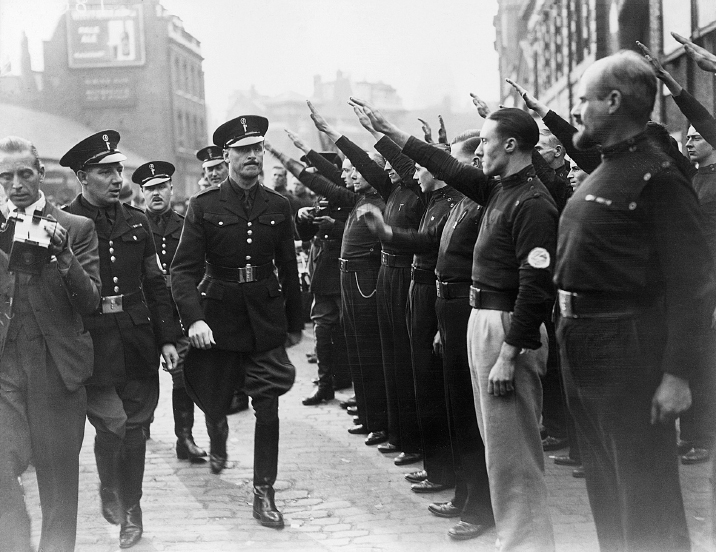Understanding World Societies:
Printed Page 922
> What was the nature of the new totalitarian dictatorships, and how did they differ from conservative authoritarian states and from each other?

The Spread of Fascism
In the 1920s and 1930s most European countries had Fascist sympathizers. The British Union of Fascists, led by Sir Oswald Mosley, modeled itself on Mussolini’s nationalist Fascist Party. Its members were highly visible in their black uniforms, but they never numbered more than a few thousand and never elected a member to Parliament. Here Mosley and his Black Shirts prepare to march through London’s Jewish East End in October 1936. Antifascist demonstrators attacked Mosley’s followers and stopped the march. (Central Press/Getty Images)
In the 1920s and 1930s most European countries had Fascist sympathizers. The British Union of Fascists, led by Sir Oswald Mosley, modeled itself on Mussolini’s nationalist Fascist Party. Its members were highly visible in their black uniforms, but they never numbered more than a few thousand and never elected a member to Parliament. Here Mosley and his Black Shirts prepare to march through London’s Jewish East End in October 1936. Antifascist demonstrators attacked Mosley’s followers and stopped the march. (Central Press/Getty Images)
BBOTH CONSERVATIVE AND RADICAL totalitarian dictatorships arose in Europe in the 1920s and the 1930s. Although they sometimes overlapped in character and practice, they were profoundly different in essence.